In contrasting recent pictorial turns to outmoded linguistic ones, the art historian Keith Moxey rightly emphasizes the presence of the image as an object. Rather than “reading” images, Moxey claims that these are now “more appropriately encountered than interpreted.” (Moxey 2008, 132) This encounter with an object is the locus of exchange, meaning, and value that implicate it as an image. However, Moxey’s understanding of presence as an encounter seems to be steeped in the art gallery, where fine art objects are forbidden to the touch of the human hand. Despite their presence as images, we remain locked in an encounter with objects, as if we were still committed to a “spectator theory” of knowledge.
There are certainly good reasons for “Do Not Touch” signs in art galleries or museums. After all, one of the most instinctive things about encountering an object is the urge to touch it, to grasp it in one’s own hands. But objects are handled and not just encountered. When objects are handled and not only viewed, their materiality and weight, their three-dimensionality and texture are brought to another level of relief altogether. This is particularly true when we experience the object’s endurance, its flows, and its resistance. What stands out in twisting and turning an object in our hand is its life and temporality, as well as its character as ready-to-hand (Zuhandenheit), as Heidegger puts it. Compared to an encounter, then, in touching and in handling we have another kind of presence altogether.1
Like Heidegger, moreover, I distinguish, in what follows, between things and objects.2 I do not take objects to be self-evident givens. Rather, they are designated and sustained by a number of forces within a broader continuum that we might call things (a number of material—physical, chemical, and organic—processes that occur in time). This implies that objects, in their fragility and temporality, may well cease to be the objects that they are; and yet remain things.3 When things and objects are made to align, we have specific object positions that make certain kinds of objects possible, like “magical” “artistic” or “scientific” ones. The forces that sustain an object in position occur at many different levels, including the social and cultural, the institutional and intellectual, and as we shall see below, the material and practical. Despite these forces, however, objects and things are always tending to move apart. There are two ways in which this might happen: one is where things outstrip objects, as in the case of breakage, decay, or a change in function; the second is when objects are no longer sustained by the same forces or things, as in the case of the transition from analog to digital images (Rubio 2016, 62).
These specific object positions in broader thing processes are not just sustained and maintained but are negotiated and achieved, which implies that we may have multiple objects appearing in the life history of one thing, or none at all. Heidegger’s example is the hammer.4 In the thing’s function and normal use, we have the hammer object demarcated. But as soon as it breaks, malfunctions, or is used for another purpose, we have the reappearance of the thing that underlies it and possibly a new realignment. However, unlike Heidegger, more recent variations of this approach, particularly those articulated by Fernando Domínguez Rubio, include a much stronger organic or temporal component, one that takes into account the constant upkeep of objects as objects in the sea of ever-changing thinghood.5 This has been called the “ecological” approach to objects, and it is what I try out with regard to photo-objects used by astronomers in the nineteenth and twentieth centuries. What we will find are specific, concrete ways of handling such objects embedded within dispositives that precisely demarcate and sustain photo-objects as material objects in astronomical practice, and keep them from dissolving into meaningless things. Ultimately, I am interested in the myriad ways astronomers handled photographs in their practice so as to make photo-objects of very specific sorts possible.
9.1 New scenes of operation
As with other objects, photo-objects have a veritable history of being touched, grasped, and handled.6 Precisely how these were handled depended on what stage of production they were in: developed photographs, for example, were treated differently than glass plates upon which the emulsion still flowed. Here, however, I am not so much interested in photographic processes that included preparation, exposure, development, and fixing, as much as in what was done with photo-objects after these were relatively completed. For instance, in post-production but before public circulation, a photograph, as a thing, might be labeled, marked, cut, scratched, retouched, mounted, framed, magnified, and enlarged, copied, reinforced, patched up, annotated, measured, and so on. These actions are accompanied by a host of tools such as pens and ink, paper, tape, scissors, diamond cutters, paints, microscopes, reading lenses, lanterns, stickers, glue, cement, wires, rulers, protractors, and so on. Many of these actions and tools existed before photography and in other contexts as well. However, they are reconstituted by their material relationships to things like glass plates or film; they are reconstituted as they gradually give rise to the photo-object as distinct from the thing. But we should also recognize that the actions and tools implicated in the laborious emergence of photo-objects usually occur at workstations that could range from simple desktops to custom-built stages and light tables.7 In simple terms, the negative needs to be seated or held fast in precise ways, lit from behind and positioned so as to be handled appropriately. Taken all together, actions, tools, and workstations are what constitute the material dispositive of handling photography.
Photo-objects were not given in any immediate way, but were always up for negotiation. Photo-objects had to be coaxed—partly by actions, tools, and workstations—into their positions and prepared for astronomical use. Once formed, the fragility of the photo-object, in the face of the ever-encroaching thing, was acknowledged and dealt with by further handlings. What I will explore are some of the dispositives that gave material shape to astronomical photo-objects. Indeed, I would like to argue that how a thing is handled contributes to what kind of object it will be. For this purpose, I will focus primarily on the photography of the stars. Beginning with the earliest ones made in the 1850s at the Harvard College Observatory, I will proceed to gradually introduce more and more complex varieties of handling and dispositives, until we come to a vast digitization project at the archives of the same observatory, over 160 years later.
For the history of astronomy, one of the most important changes to come with photography was where astronomers worked. Previously seated at the telescope in the middle of the night, they were now indoors within prosaic office spaces. This change was radical because it was also a change in dispositives—instead of working at night in a space constrained by large telescopes, for example, daylight was now used to examine the heavens with a microscope. As one astronomer put it at the beginning of the twentieth century:
by making a picture of the sky we simply change the scene of our operations. Upon the photographs we can measure that which we might have studied directly in the heavens … Convenient day-observing under the microscope in a comfortable astronomical laboratory is substituted for all the discomforts of a midnight vigil under the stars. The work of measurements can proceed in all weathers, whereas formerly it was limited strictly to perfectly clear nights. (Jacoby 1904, 92–93, emphasis in original)
However, simply bringing the negatives back into the warmth of the office was not enough to generate photo-objects. Even a good picture required further work on the plate in order for it to acquire the status of an object that could be used by astronomers. In fact, bringing the plates into the office was not always a matter of comfort afforded by new methods as much as it was necessitated by the materiality of things in hand. Consider the case of George Phillips Bond, the mid-nineteenth-century astronomer at the Harvard College Observatory. In the 1850s, with the aid of local Boston photographers John Adams Whipple and James W. Black, using the newly developed collodion process, Bond acquired some of the first photographs ever taken of the stars.8 This was an extremely difficult undertaking, but one that showed, at least in principle, that astronomers might be able to continue traditional positional work with photography; in other words, that stars and their positions, distances, motions, and magnitudes might be derived directly from photographic plates themselves, instead of from the surface of the heavens as seen with a telescope. However, not only could the stars being pictured not be seen through the telescope fitted for photography, but when the plates were developed and fixed on the scene, soon after exposure, the stars were often not seen on the negatives. The problem was that the star images formed on collodion glass plates were just too small and ill-shaped, making it difficult to distinguish them from specks of dust and other marks found on developed plates. So Bond had to wait for the morning sun, when the star might be found by diffused sunlight directed by mirrors to act as the backlight for a light-lectern upon which the negative plate was positioned and where a magnifying glass might conveniently be used while at the desk. Besides sunlight, mirrors, magnifying lenses, lecterns, and desks, what Bond did directly on the surface of the glass plate was also of crucial importance: he circled the place of the stars in sumptuous black ink (see Fig. 1).
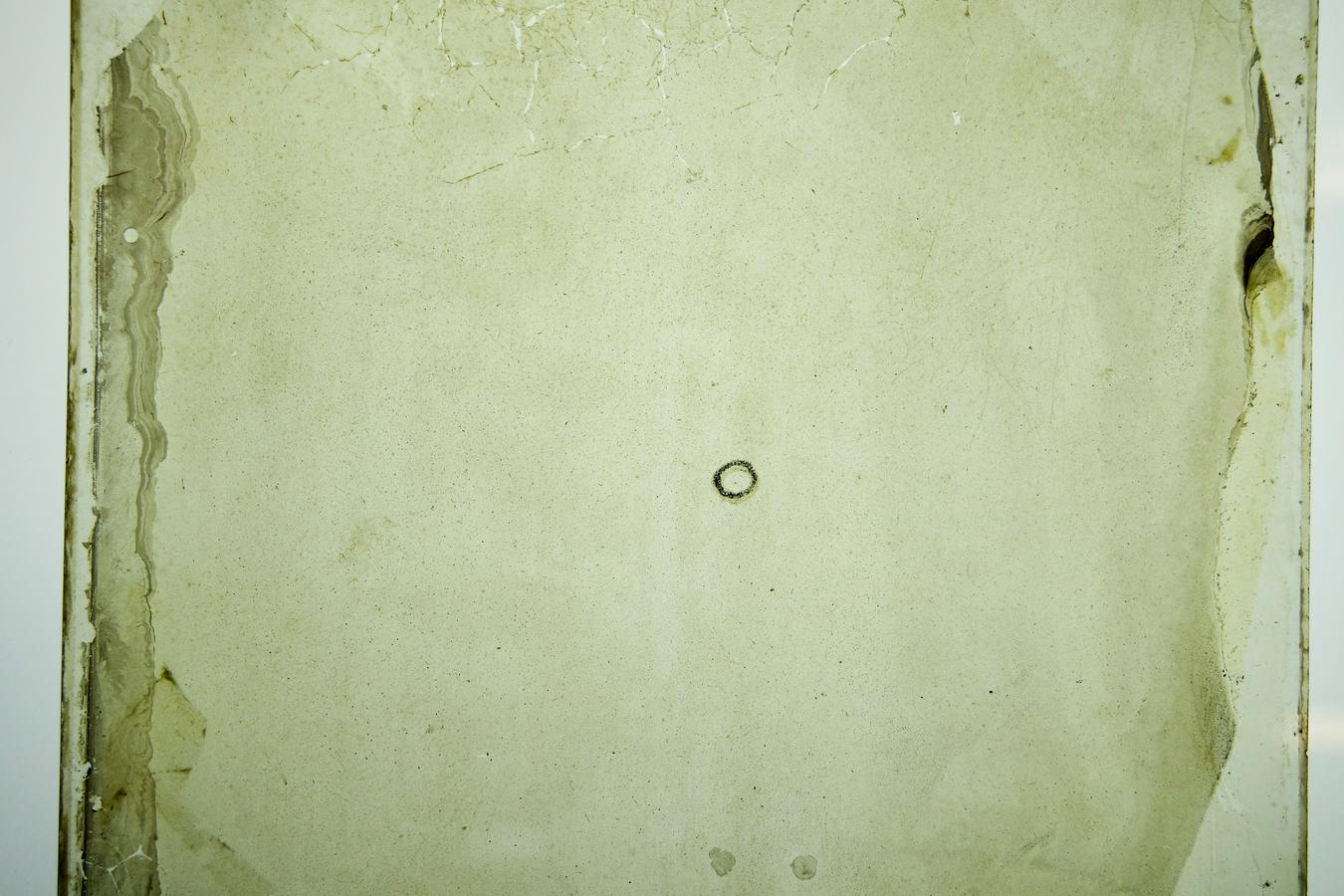
Fig. 1: Collodion plate of the star ξ Bos, George Bond, May 29, 1857, Harvard College Observatory Archives, No. IX.
This is a common practice found throughout Bond’s photographic work with the stars. And it operated at many different levels, including measurement and identification of the stars throughout the life of the project. The ink circles in fact sustained the photo-object so as to make it ready for astronomical use. Yet Bond’s plates remain potentials of what could be achieved, chiefly because the stars were not perfectly round and the system of measurement imposed upon the plates was not as rigid as it could have been; in other words, he employed rudimentary means to measure the stars: a micrometer attached to a microscope, a ruler, and a protractor directly on the surface of the glass plate.
9.2 Measuring machines and the maintenance of photo-objects
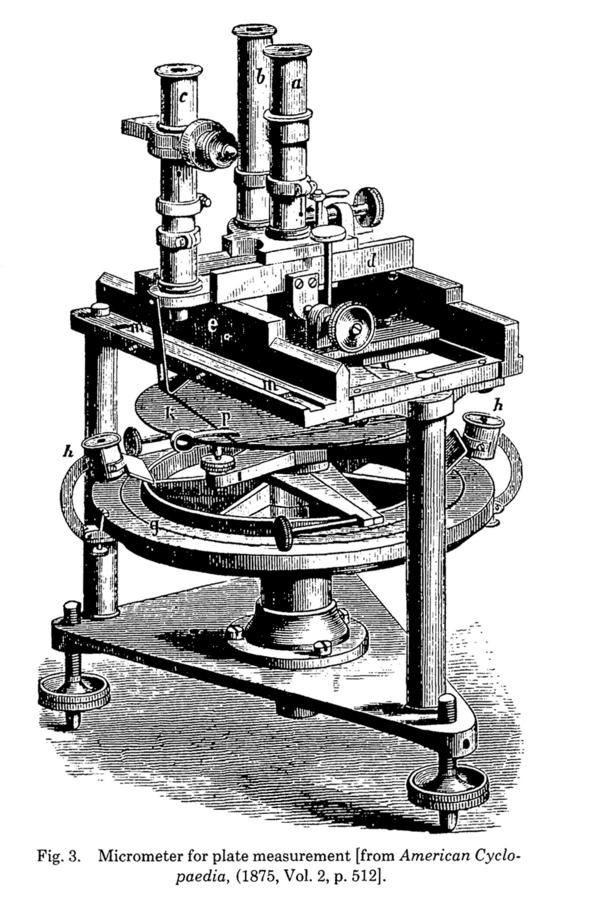
Fig. 2: Lewis Morris Rutherfurd’s Photographic Plate Measuring Machine, from entry for ‘Micrometer,’ in American Cyclopædia, vol. 2, New York, 1875, p. 512.
It was in the 1860s that the first measuring machine was constructed for the purposes of holding and precisely placing a glass plate so that star positions and relative distances could be measured according to a standard scale (see Fig. 2). This was the machine built in New York by Lewis Morris Rutherfurd, who obtained some of the finest star images using the collodion process. The measuring machine was placed upon some stable surface, leveled and held properly in place by means of adjustable legs. The observer looked down one of three microscopes, two for images on the surface of the glass plate and the third for reading the fine scales of the micrometer screw gauge. Rutherfurd also made many kinds of marks directly on his glass plate negatives (see Fig. 3), but these ostensibly reflected a brand-new arrangement and a specific history of handlings of his dispositive.
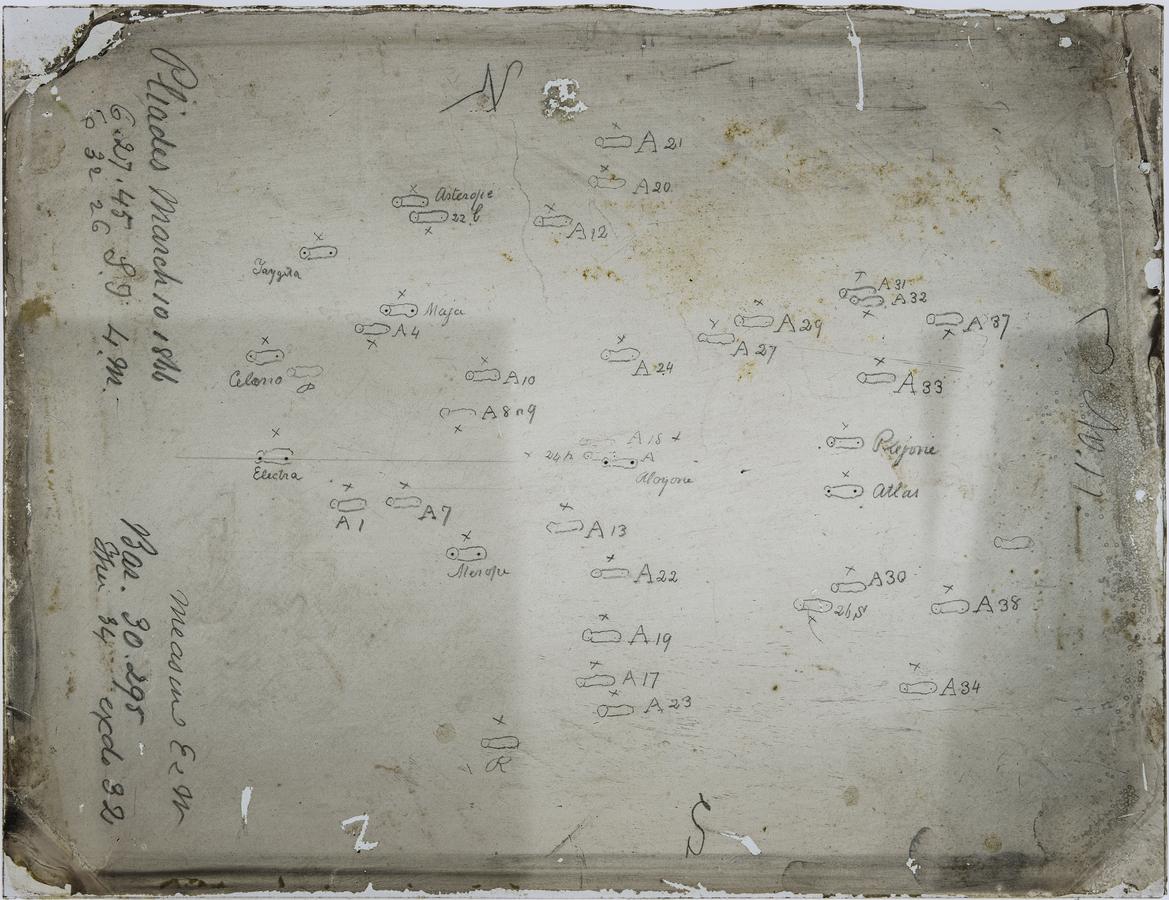
Fig. 3: Lewis Morris Rutherfurd’s collodian plate of the Pleiades, one of three taken on March 10, 1866 and subsequently measured in July 1866, courtesy of Columbia University.
For each star, Rutherfurd systematically took two exposures, which helped him to measure and identify stars from specks of dust or silver. Once labeled and measured, he marked the work done with an x right on the plate. On the same plate, we can see dates, signatures, names of constellation or structures, and even the particular settings used on the measuring machine. The same glass plates continued to be measured well into the twentieth century, proving the stability of the object established by these dispositive means. Consequently, those who handled Rutherfurd’s glass plates handled photo-objects differently from those handled in Bond’s dispositive.9
To all intents and purposes, Rutherfurd’s material dispositive would generally be used well into the twentieth century, and was, in a modified form, central to the large-scale Carte du Ciel project to photographically map, in cooperation with 20 observatories around the world, all the stars up to the 11th magnitude (Weimer 1987). There were a number of modifications, but one of the most controversial was the question of whether to use glass plates prepared with a reseau of squares or not. Depending on which alternative was selected, a different type of measuring machine would be required (see Fig. 4).10
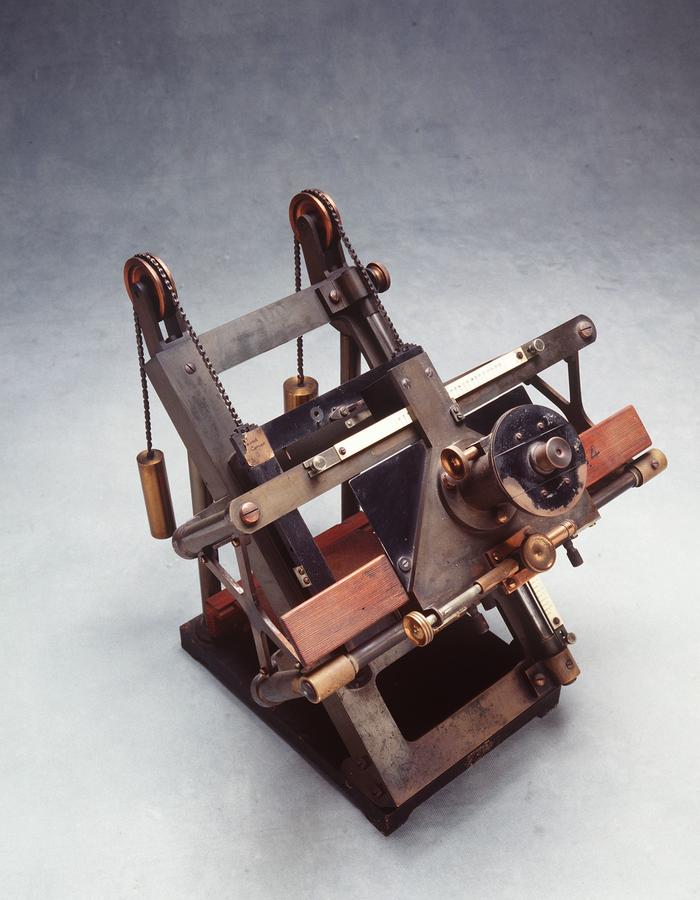
Fig. 4: A measuring machine made by Troughton & Simms in London for the Sydney and Melbourne Observatories and used in their contributions for the vast Carte du Ciel project, source: Museum of Applied Arts and Sciences in Australia.
There are three things in particular that interest me about these newer measuring machines. First, unlike Rutherfurds’ machine where one had to stand and look straight through the microscopes, the new machines were adjusted so that the observer could be comfortably seated at the table. Second, accompanying these changes in arrangement, photo-objects began to be handled, more and more, by women. And finally, a variety of new practices and techniques can be found on photo-objects now emerging from within these new dispositive regimes.11
However, the fragility of these photo-objects was also recognized at the time. Despite claims to permanence, many also acknowledged that material and even organic processes could dramatically change the composition of the emulsions and the plates over time—the object thus acquired and stabilized could, at any moment, return to being a thing. It is therefore significant to understand how the elusive object, in the face of the ever-encroaching thing, was re-stabilized. Take the example of the legendary astrophotographer Isaac Roberts, who complained that “the records obtained by photography are peculiarly liable to be lost by accidental breakage of the glass negatives. Besides this there is a certainty that after the lapse of a limited number of years the gelatine films will become discoloured; the images will fade, and the faint stars and the faint nebulosities will entirely disappear from view” (Roberts 1893–1899, 15). For instance, on February 15, 1886, a photograph was taken of a specific region of the sky. Roberts counted 403 star images on the resulting negative. Nine years later, Roberts again counted the number of stars on the same negative, and found only 272; that is, 131 stars had simply disappeared. The solution, thought Roberts, was to find a way to retain the information on these plates by using “permanent ink.” He set out to construct a tracing machine, or what he called a “stellar pantograver” (Roberts 1888).
This was a device that allowed Roberts to accurately transfer stars from glass plates to copper plates so that they could then be printed on paper in the usual manner. Not only were the stars transferred, but their positions and magnitudes. To do this, the pantograver was equipped with a microscope and a micrometer with fine lines to bisect a star’s center. As the center was determined using the micrometer on the negative, a finely tuned appendage equipped with a steel pin carrying a diamond point would simultaneously also slide over the copper plate. When the arms were positioned precisely with relation to both plates, the diamond point was used to engrave a dot of varying sizes that corresponded to different apparent magnitudes.
9.3 Paper and glass
We have seen plates held up for examination and marked up in a variety of ways. Besides pens, desks, chairs, microscopes, lecterns, and measuring machines, I would like to introduce another element that plays a vital role in holding the object as a photo-object in its precarious position, and that is paper. To see this, consider this image of astronomer Edwin Hubble at work with a glass plate (see Fig. 5). Here we see Hubble using a loupe to examine a glass plate skillfully supported by one hand, while the other uses the tip of a pencil to count. We are lucky, however, to also have another image of the same situation (see Fig. 6), in which Hubble uses the same pencil to write something in a notepad placed next to him.
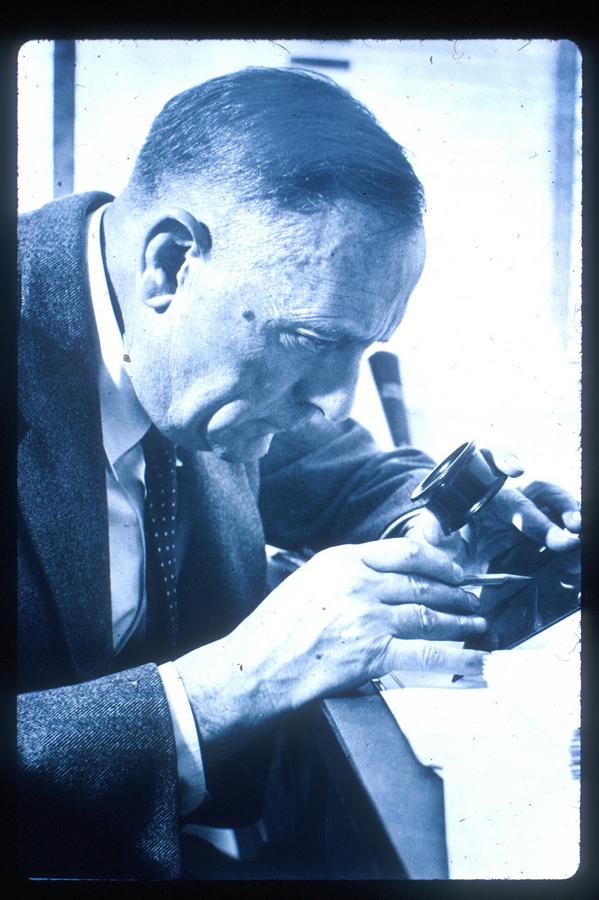
Fig. 5: “Edwin Hubble scanning a photographic plate,” source: Armagh Observatory online database of images.
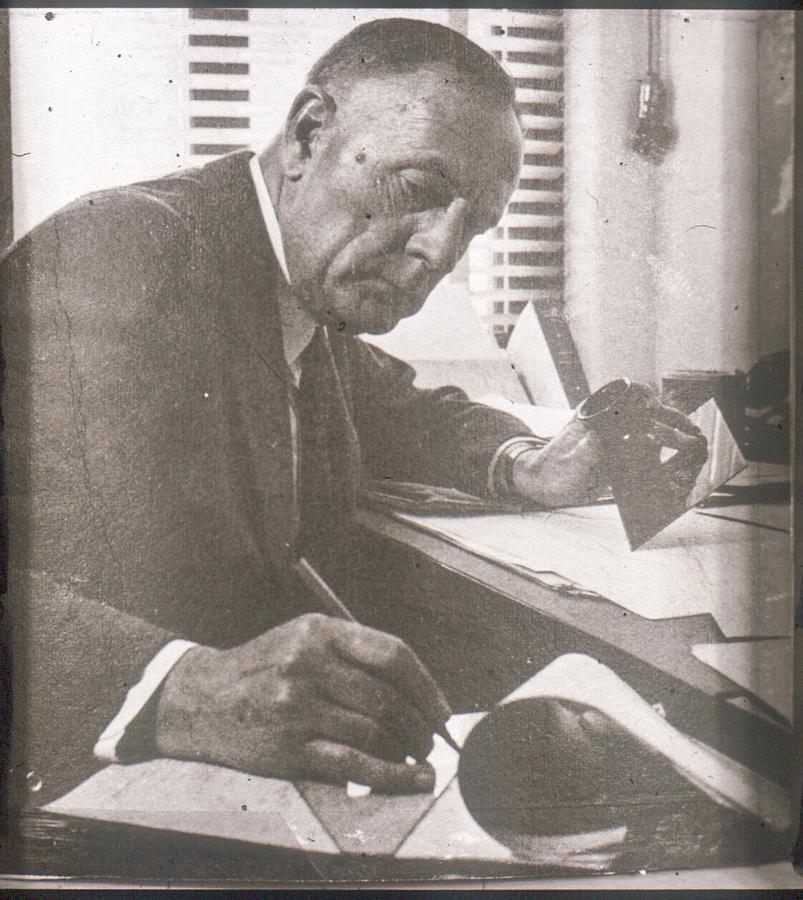
Fig. 6: “Edwin Hubble in his office in the early 1950s,” source: Armagh Observatory online database of images.
The presence of paper is a significant part of handling photo-objects in astronomy. This fact is so easily overlooked that many contemporary archives do not link photographs with corresponding notebooks in their catalogs or collections. As a result of this, it was only after an extensive search at a number of archives at Harvard that I accidently happened upon George Bond’s notebooks that he used while plates were being exposed, developed, and examined in the office. In these notebooks, he jotted down measurements and results, chemicals and exposure times, as well as atmospheric conditions, other plates used or discarded, difficulties and challenges faced. We even find drawings of some stars as they appear on negatives, along with notes about the material quality of the photo-object and what might be done to improve it. Bond’s notebooks form a part of his dispositives that gradually steadied photo-objects in the face of pending thinghood.
Paper is not just to be seen next to negatives, however. It is also found all around the plates, quite literally. Sometimes paper is pasted directly onto glass plates as labels and at other times it is used to support broken plates; sometimes it is used to direct our attention, focus, and narrow down what is shown while in other cases it brings into relief the three-dimensionality of photographs as objects. Indeed, there are a whole host of ways in which paper was used to hold glass plates so that they could act as photo-objects suitable for handling by the astronomer. The history of paperwork in relation to photography still has to be written (something I do in my forthcoming book on photography).
Before I wrap things up, let me bring to your attention another example of how paper was used as an element of an elaborate dispositive. Let us go back to the Harvard College Observatory in 1895. William Pickering’s photographic work on the Orion Nebula was conducted between 1887 and 1891 (Pickering 1895). What resulted from these years of photographic work was this, a hand-drawn paper map (see Fig. 7). The map is the product of 22 glass plate negatives of the Orion Nebula that Pickering took using five different telescopes, at three different locations in the Americas (Boston, Southern California, and Peru’s Arequipa Region). Each of the 22 plates has its own history of handlings, which includes all kinds of markings and papers, practices and techniques. In fact, how they were all coherently handled together within a particular dispositive is what I am interested in. In particular, paper seems to be an essential part to an orchestrated handling of a number of things in order to form an object. The information that is extracted from each of these plates forms some part of the final paper schematic map. From these plates, Pickering began by selecting one that he considered best, and used it to form the initial basis of the paper chart. It was enlarged and then a bromide print was made from it. Pickering took a fresh blank piece of paper and attached it to the back of the print. The positions of the all the more conspicuous stars on the print were then simply pricked through with a steel pin, through to the piece of paper behind it. Using these pricked holes, or stars, as the standards, the blank piece of paper was then covered in lines to form a scaled grid. Afterwards, all kinds of information was extracted—using microscopes, pens, paper, and so on—from the other plates, and entered by pencil or ink onto the sheet of paper, already prepared with pin holes and a grid. This is admittedly a complex case, but I think it shows that at some point in the photographic process, paper, whether as prints or blank pieces of paper, was used to identify and hold reference points from many different photo-objects produced using a variety of techniques. In other words, many photo things were transformed into objects by being held together in one place and in another medium such as paper. Indeed, Pickering’s paper map of the Orion Nebula is an integral part of a photographic process.
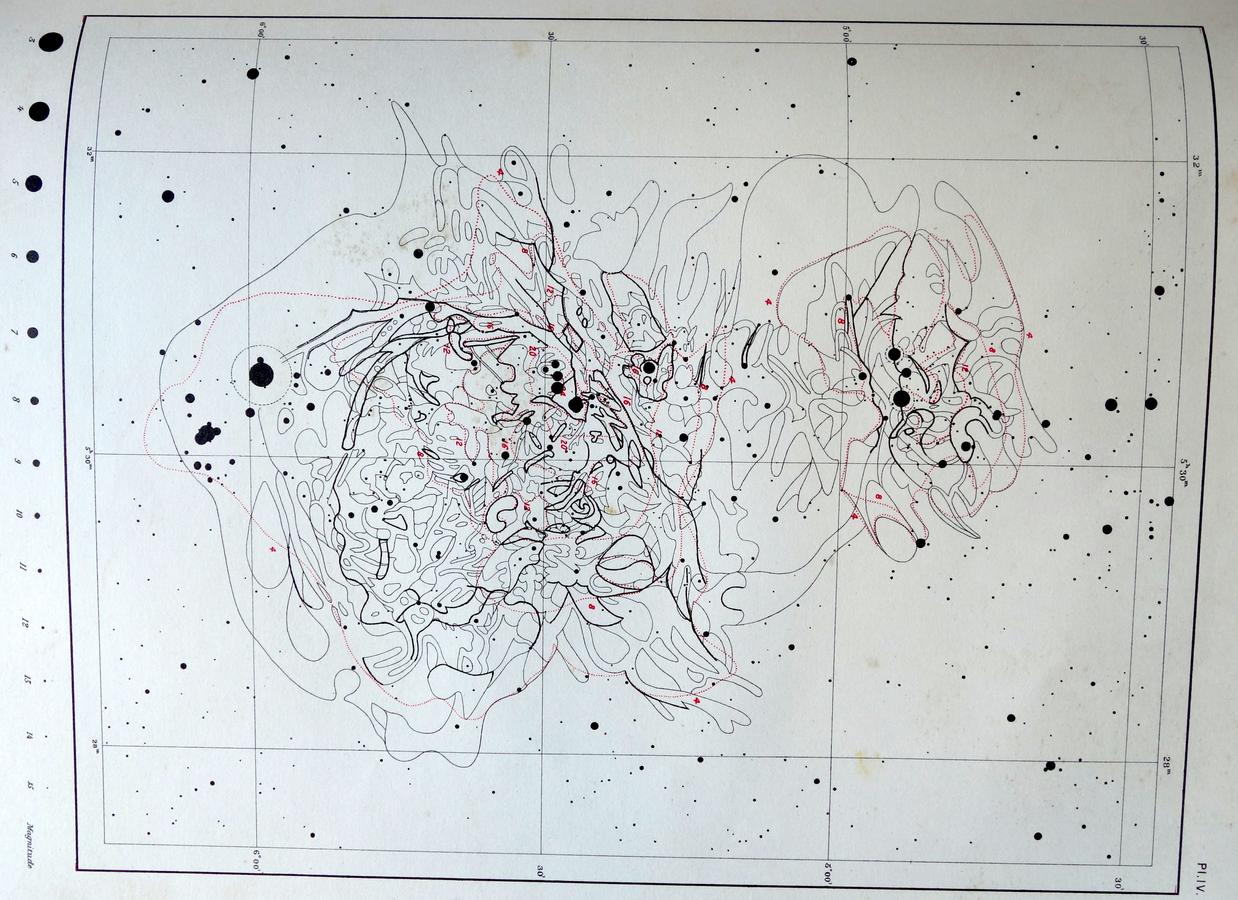
Fig. 7: William H. Pickering’s paper map of the Great Nebula in Orion (M42), Plate IV, from “The Great Nebula in Orion,” in Investigations in Astronomical Photography, Cambridge, 1895.
9.4 When objects exceed the thing
Photo-objects are not given. Rather, they are developed in the process of handling within the context of dispositives. It is in the handling of what is presented that we begin to home in on photo-objects as fields of work, as material things that can be shaped into objects, with consequences for how we derive scientific phenomena. The tracings of this handling are themselves materially present and diverse, and show the forces involved in shaping things into objects. Yet in this development, where an object comes to be materially realized, stabilized, and maintained, the thing is ever fighting back (see Fig. 8).
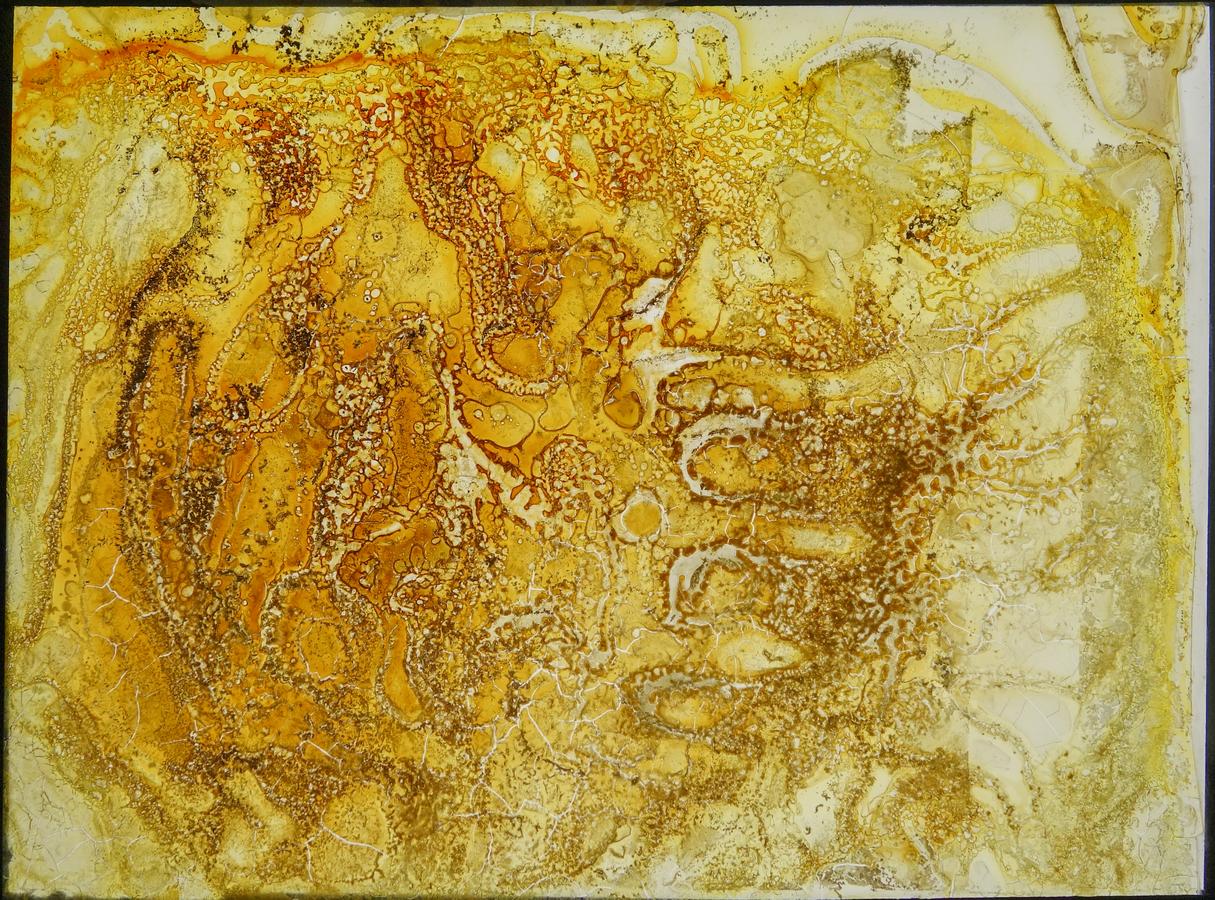
Fig. 8: Chemically disintegrated glass plate of the nebula NGC 3115 (Sextantis), taken with the Mount Wilson 60-inch reflector, December 23, 1911, exposure time of 100 minutes, reproduced with permission of the Royal Astronomical Society.
As four-dimensional processes, things resist in sheer defiance of the object. But so far, our examples have focused on how the thing was prevented from falling out of step and exceeding the photo-object, even after it had been stabilized. In contrast to these cases, then, allow me to conclude with an instance of the object exceeding the thing, such that the object is no longer bound to the productive forces and trappings of the thing.
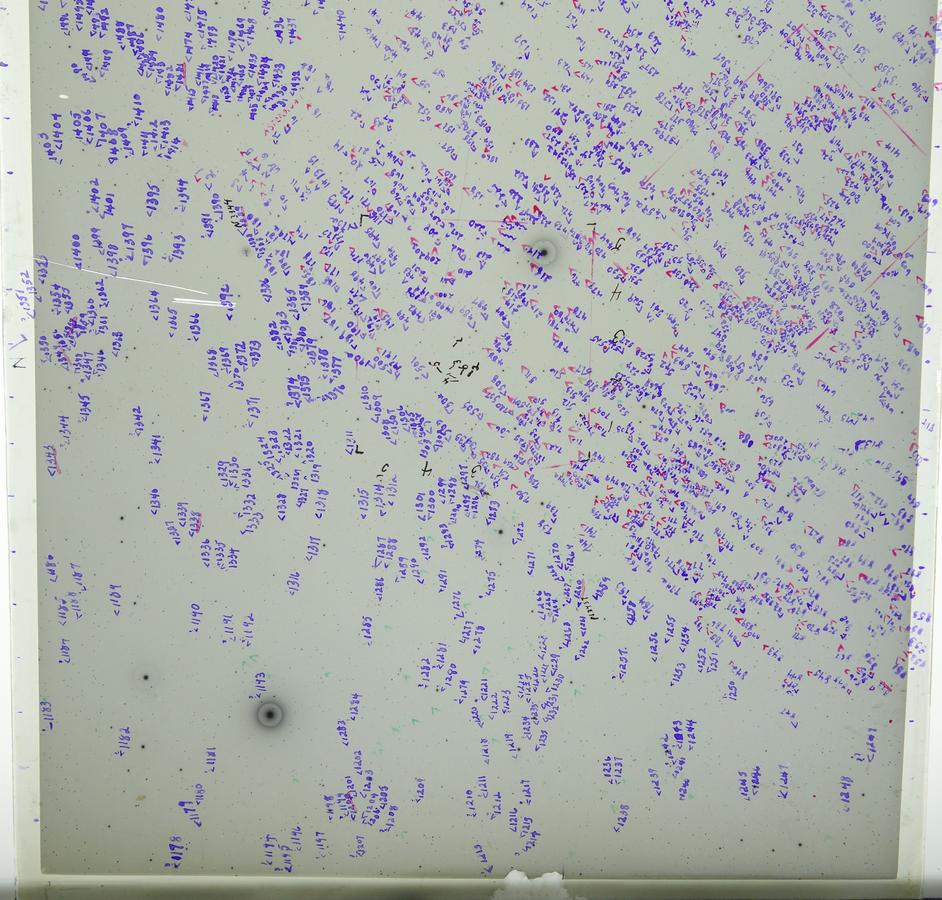
Fig. 9: Region R. A. 10 40; Dec. +24.2, taken on February 2–3, 1943, exposure time of 180 minutes, reproduced with permission of the Harvard College Observatory Archives.
Take this splendid example of a photo-object developed by a series of handlings within a particular dispositive arrangement (see Fig. 9). It is a plate from the Harvard College Observatory that was first produced in the twentieth century, and its objecthood was stabilized and sustained well into the rest of the century. It is in fact just one of half a million photographs at the Harvard College Observatory Archives, the largest historical collection of astronomical photographs in the world. In 2011, the archive acquired funds from the National Science Foundation to convert these photographs into digital images, using state-of-the-art scanners, custom made for the purpose. The Principal Investigator is an astronomer whose goal is to digitize the entire collection so that information found on the plates can be stored as 1.5 petabytes of data and processed using software that analyzes sets of values important to contemporary astronomers. In other words, the stability and maintenance of the object has acquired an entirely new dispositive arrangement that literally embeds it into computational processes. The consequence of this recent alternative form of objecthood is that what used to be stabilizing forces that brought and held together photo-objects—such as ink markings and annotations directly on the surface of the glass—are no longer required by astronomers; rather, these forces are now considered noise or interference that only disrupt the digital image and its analysis. This means that before each plate is scanned, it must be cleaned. To quote from the magazine Popular Science:
Curatorial Assistant Jaime Pepper begins the process of cleaning a negative before scanning. For now, the team is using brushes, Windex and razor blades for the particularly hard-to-remove annotations. But the team will get some help soon from a custom-built automatic plate washer, funded by a National Science Foundation grant. It will run plates through a conveyor belt, much like a car wash, scrubbing the annotated side with brushes and water. (Boyle 2011)
To date, the Head Archivist and curatorial staff have cleaned well over 250,000 plates—many of them from the late nineteenth and early twentieth centuries. For astronomers, therefore, what remains of the glass plates, after the digital scans have been made, are over 170 tons of mere things; things that might have manifested objecthood for astronomers at one time or other but have now been overcome by objects of another order, digital ones. But just because glass plates are no longer photo-objects for astronomers does not mean they no longer form photo-objects for historians today. In fact, this example shows how shifts in the thinghood of objects and the objecthood of things can create tensions as we move from one century to another, from one discipline to another, indeed, from one dispositive to another.12
9.5 Conclusion
Let me end here on a positive note and return to art, where we encounter a similar point about the tensions inherent in such shifts. Take a look once again at Fig. 8. At some point in its life history, it contained an image of a nebula (NGC 3115) taken at Mount Wilson Observatory on December 23, 1911 with a 60-inch reflecting telescope. At another unknown point in its history, it disintegrated into a meaningless thing, at least for astronomy; for a thing can always be reconstituted into an object, albeit of another kind, like an art-object. The contemporary photographer Marcus DeSieno constitutes just such art-objects in his visually rich Cosmos series. In Fig. 10, we have a piece entitled, A Photograph of the Milky Way Eaten by Bacteria Found in Unpasteurized Milk. DeSieno takes swab samples from a variety of places and things (light switches, engagement rings, iPhones, toilet seats, saliva, restaurant tables, etc.) and exposes them to photographic film of celestial objects so that bacteria may grow into them and produce organically striking results. But if he does not take another photograph of the film at a certain point in this process—thus stabilizing the art object—he will be left with mere things. The products are stunning photo art objects that remain things for astronomy (and microbiology, for that matter). Indeed, DeSieno’s photo-objects capture the organic character of the dynamic and ever-changing relationships between things and objects.
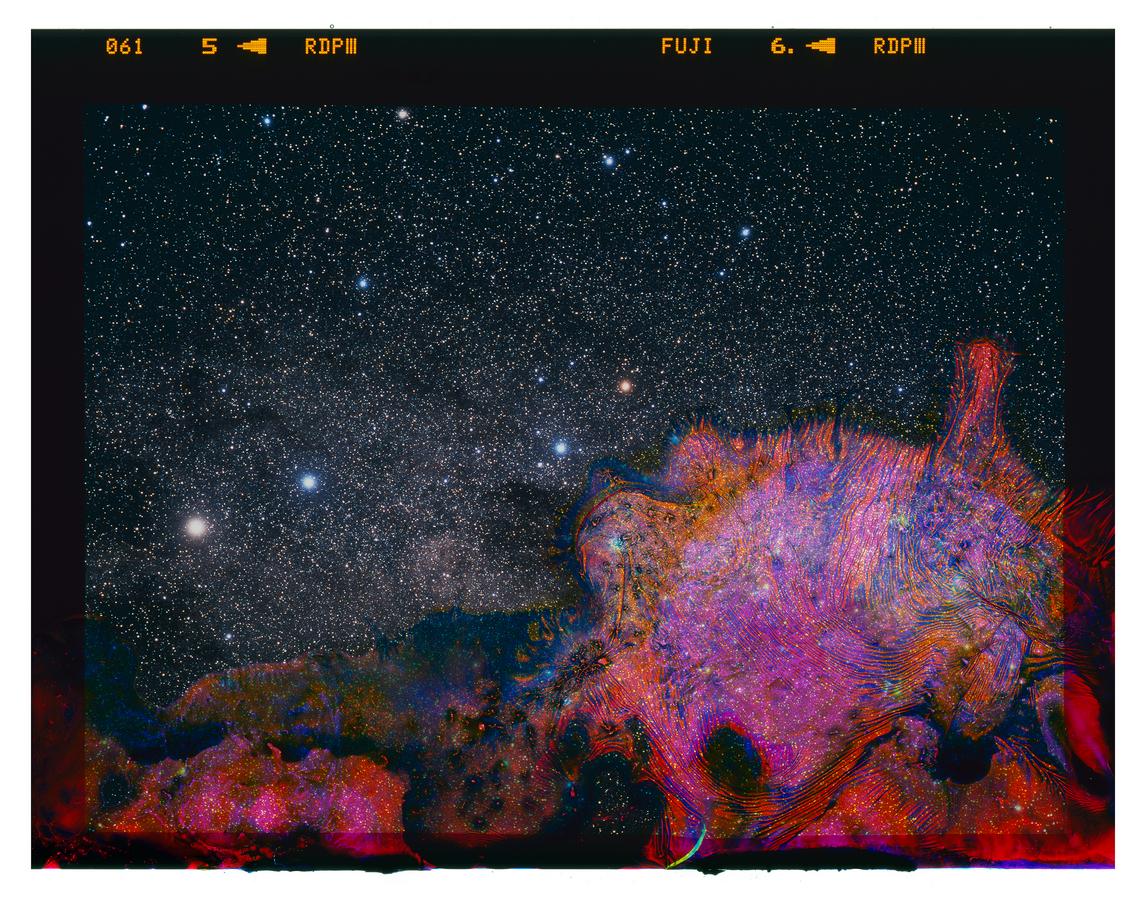
Fig. 10: A Photograph of the Milky Way Eaten by Bacteria Found in Unpasteurized Milk, Marcus DeSieno, 2014, Archival Pigment Print of Bacteria Grown on Photographic Film, reproduced with the kind permission of the artist.
9.6 List of Figures
• Fig. 1: Collodion plate of the star ξ Bos, George Bond, May 29, 1857, collodion plate, Harvard College Observatory Archives, No. IX.
• Fig. 2: Lewis Morris Rutherfurd’s Photographic Plate Measuring Machine, from entry for 'Micrometer,' in American Cyclopædia, vol. 2, New York, 1875, p. 512.
• Fig. 3: Collodion plate of the Pleiades, Lewis Morris Rutherfurd, March 10, 1866, collodion plate, Columbia University © Columbia University.
• Fig. 4: A measuring machine made by Troughton & Simms, taken from the online image collection of the Museum of Applied Arts and Sciences in Australia: https://collection.maas.museum/object/231012, accessed January 9, 2018.
• Fig. 5: Edwin Hubble scanning a photographic plate, from the Armagh Observatory online database of images: https://web.archive.org/web/20170705202609/http://star.arm.ac.uk/images/historical/People/phpshow.php?oldGD&slides&85, accessed January 9, 2018 (see image #86/456).
• Fig. 6: Edwin Hubble in his office in the early 1950s, from the Armagh Observatory online database of images: https://web.archive.org/web/20170705202606/http://star.arm.ac.uk/images/historical/People/phpshow.php?oldGD&slides&84, accessed January 9, 2018 (see image #85/456).
• Fig. 7: William H. Pickering’s paper map of the nebula in Orion (M42), Plate IV, taken from “The Great Nebula in Orion,” in: Investigations in Astronomical Photography, Cambridge, 1895.
• Fig. 8: Chemically disintegrated glass plate of the nebula NGC 3115 (Sextantis), taken with the Mount Wilson 60-inch reflector, December 23, 1911, exposure time of 100 minutes, glass plate, Royal Astronomical Society © Royal Astronomical Society.
• Fig. 9: Region R. A. 10 40; Dec. +24.2, February 2–3, 1943, exposure time of 180 minutes, Harvard College Observatory Archives © Harvard College Observatory Archives.
• Fig. 10: A Photograph of the Milky Way Eaten by Bacteria Found in Unpasteurized Milk, Marcus DeSieno, 2014, Archival Pigment Print of Bacteria Grown on Photographic Film © Marcus DeSieno.
9.7 References
Boyle, Rebecca (November 2011). Recording a Century of Night Skies Through a Scanner Darkly. Popular Science. url: https://www.popsci.com/science/article/2011-10/recording-century-night-skies-through-scanner-darkly (visited on December 20, 2016).
Breitbach, Julia (2011). The Photo-As-Thing: Photography and Thing Theory. European Journal of English Literature 15:31–43.
Brown, Bill (2001). Thing Theory. Critical Inquiry 28(1):1–22.
– ed. (2004). Things. Chicago: University of Chicago Press.
Edwards, Elizabeth and Janice Hart, eds. (2004). Photographs Objects Histories: On the Materiality of Images. London: Routledge.
Gould, Benjamin Apthorp (1892). Preliminary notice of the reduction of Rutherfurd’s star-plates. The Observatory 14:52–55.
Harpham, F. E. (1900). The Rutherfurd Photographs. Popular Astronomy 8:129–136.
Heidegger, Martin (1968). What is a Thing? South Bend: Gateway Editions.
– (1985). Being and Time. Oxford: Bail Blackwell. Translated by J. Macquarrie and E. Robinson.
Hinks, Arthur Robert (1901). The Cambridge Machine for Measuring Celestial Photographs. Monthly Notices of the Royal Astronomical Society 61:444–458.
Ingold, Tim (2007). Materials against Materiality. Archaeological Dialogues 14:1–16.
– (2012). Toward an Ecology of Materials. Annual Review of Anthropology 41:427–442.
Jacoby, Harold (1892). Rutherfurd Photographic Measures of the Group of the Pleiades. New York: Columbia University.
– (1904). Practical Talks by an Astronomer. New York: Charles Scribner’s Sons, 92–93.
Jones, B. Z. and L. G. Boyd (1971). The Harvard College Observatory: The First Four Directorships, 1839–1919. Cambridge: Harvard University Press.
Moxey, Keith (2008). Visual Studies and the Iconic Turn. Journal of Visual Culture 7: 131–146.
Nasim, Omar W. (2018). James Nasmyth on the Moon; Or on Becoming a Lunar Being, Without the Lunacy. In: Selene’s Two Faces: From 17th Century Drawings to Spacecraft Imaging. Ed. by Carmen Pérez González. Leiden / Boston: Brill, 147–187.
– (2019). The Labour of Handwork in Astronomy: Between Drawing and Photography in Anton Pannekoek. In: Anton Pannekoek (1873–1960): Ways of Viewing Science and Society Modernism in Science, Radical Politics and Art. Ed. by Jeroen van Dongen and Chaokang Tai. Amsterdam: Amsterdam University Press.
Olin, Margaret (2012). Touching Photographs. Chicago, IL: The University of Chicago Press.
Pickering, William Henry (1895). Investigations in Astronomical Photography, (Annals of the Astronomical Observatory of Harvard College): Vol. 32, Part 1. Cambridge: Harvard Observatory.
Rees, John Krom (1906). The Rutherfurd Photographic Measures. New York: Columbia University.
Roberts, Isaac (1888). On an Instrument for Measuring the Positions and Magnitudes of Stars on Photographs and for Engraving them upon Metal Plates, with Illustrations of the Method of using the Instrument. Monthly Notices of the Royal Astronomical Society 49(1):5–13.
– (1893–1899). Photographs of Stars, Star-Clusters and Nebulae: Together with Records of Results Obtained in the Pursuit of Celestial Photography. 2. London: Universal Press.
Rubio, Fernando Domínguez (2016). On the Discrepancy Between Objects and Things: An Ecological Approach. Journal of Material Culture 47:59–86.
Schechner, S. J. and D. Sliski (2016). The Scientific and Historical Value of Annotations on Astronomical Photographic Plates. Journal for the History of Astronomy 47:3–29.
Sobel, Dava (2016). The Glass Universe: The Hidden History of the Women Who Took the Measure of the Stars. London: 4th Estate.
Weimer, Théo (1987). Br ève histoire de la Carte du Ciel en France. Paris: Observatoire de Paris.
Footnotes
Margaret Olin does a good job motivating the act of touching photography, mostly in the introduction to her Touching Photographs (Olin 2012). The suggestion of treating photographs as three-dimensional objects is most clearly stated in Edwards and Hart 2004.
Heidegger 1968. More recently, the theorist Bill Brown also distinguishes these in relevant ways (Brown 2001; Brown 2004). Julia Breitbach, who applies Brown’s theory to photography, characterizes Brown’s separation of thing and object as follows: “Things precede and exceed objects, and objects are what the human intellect makes of things” (Breitbach 2011, 33). Breitbach’s own “photo-as-thing-theory,” however, tends to quickly fall back not just into the intellect but also into the purported magical qualities of photography’s access to the “Real” (Breitbach 2011, 38). In sharp contrast to this, my own approach remains at the level of materials and processes—handling—rather than the idealistic qualities of photography.
See, for example, Heidegger 1985, in particular, Part 1, Chapter 3, pp. 98–100.
Rubio 2016. Cf. Ingold 2007; Ingold 2012.
For more on the epistemological role of the hand in scientific photography, see Nasim 2019.
For more on the labor side of astrophotography, see Nasim 2018.
For more, see Jones and Boyd 1971.
See Gould 1892; Jacoby 1892; Rees 1906; and Harpham 1900.
See, for instance, Hinks 1901.
For the role of women in this new regime of observation, see Sobel 2016.
See, for instance, the reactions to wiping photographs clean recorded in Schechner and Sliski 2016.
